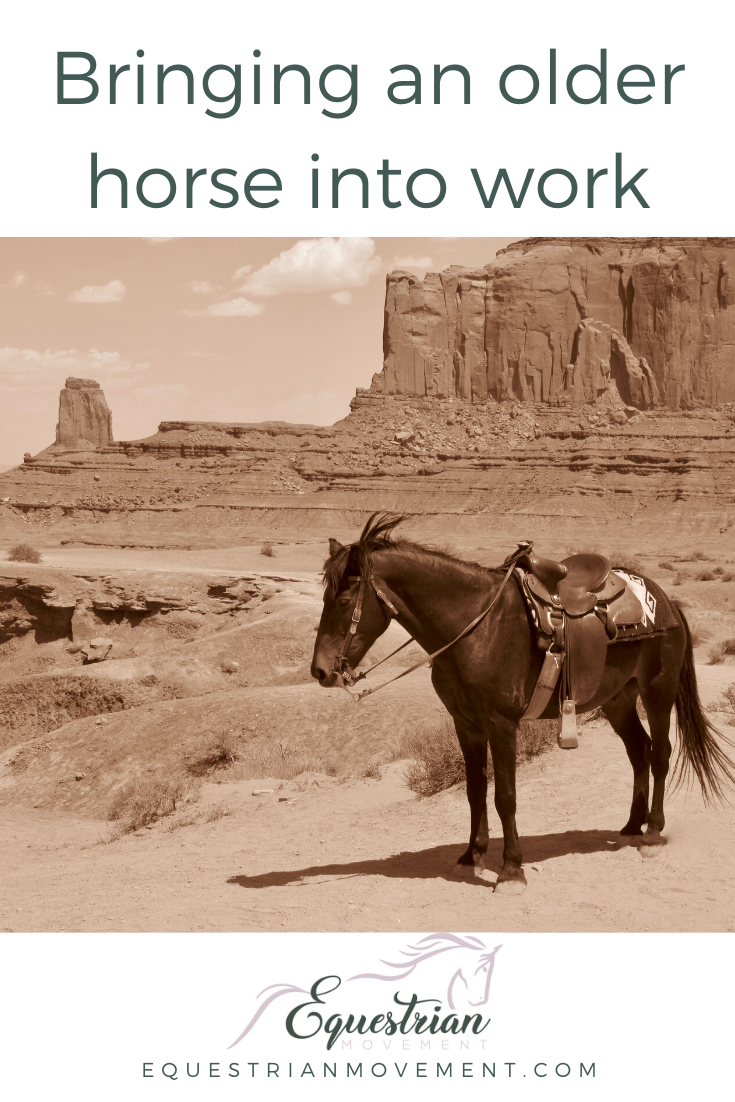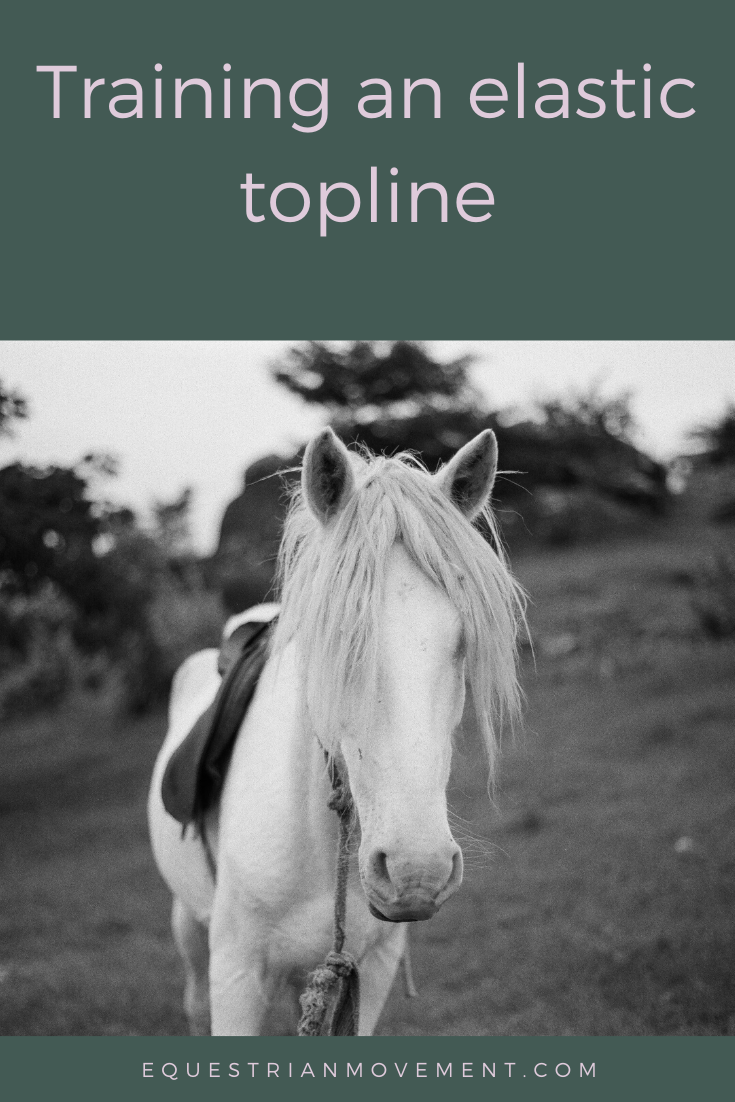Bringing a senior horse back into work
When our older horses are out of work, they will lose muscle condition quicker and be slower to regain the condition when brought back into work than our younger horses. We also will start to see (if we haven’t already) the toll their riding career has taken on their body with signs of arthritis starting to show.
Our horses are considered mature from the age of 15 years.
As our horses age, the muscles ability to adapt to exercise and stress slows down.
When our older horses are out of work, they will lose muscle condition quicker and be slower to regain the condition when brought back into work than our younger horses. We also will start to see (if we haven’t already) the toll their riding career has taken on their body with signs of arthritis starting to show.
Your horse needs a strong back to hold you. Depending on how long your horse was out of work and how old they are, they will need time to build up the strength of their back to hold you. If they were only out a week or 2 that is fine but if they’ve been out a couple of months they will really need help regaining the strength of their topline to hold you. This is where in-hand exercises and in-hand hacks can be really supportive to your horses condition.
Their endurance will also need to be built up again slowly. As with their muscles, their cardio will take longer to come back into work. Don’t expect them to be up and ready for a half hour of canter if they’ve been out of work even 3 months. You may find yourself doing lots of hacking out and hills in walk and light trot to bring them back into work.
It is always important to ensure they have a good warm up, but even more important in older horses. The older they get the more likely it is that they need a good quality warm up and cool down to prevent muscle strains and injury. Most horses need a good 20min of just walk before trotting and cantering, because this is how long it takes the joints to get working properly.
Keep the exercises easy and don’t just move on because you aren’t getting resistance. While our younger horses like quick training sessions so we finish on a win before we over do their period of time they can concentrate for, our older horses need a little longer on each exercise to ensure they have completely let go and swinging into the movement. Moving on too quickly can lead to muscle strains and injury.
Looking for more help? Join the Arena Grande to access our Green to Self Carriage Program - which builds on exercises in a gentle way to ensure your older companion can develop in a safe, achievable way for long term benefits!
Training an elastic topline
Developing the topline means we need to allow for the freedom of movement.
Movement is dynamic.
What this means is that it is ever changing, adapts to stress, becomes limited when unsupported and increases in range of action when supported.
When we try to force a certain way of moving, it actually limits the horses freedom of movement. When we focus on their core strength and balance, it increases their freedown to move.
This is why we need to exercise and condition our horses to perform the movements we ask.
When they are exercising we are creating an environmental stress that their body is adapting to. When that stress is too much, or there is an underlying injury or imbalance the body adapts to reduce movement to protect from injury. When there is just enough over a period of time the body adapts to support movement and in becomes enhanced.
In fact, with all things going perfect and no underlying physical or training, from introducing a new exercise it takes:
- 6 – 8 weeks to develop coordination of the movement (the nerves to innervate the muscles)
- 3 – 4 months for muscle condition
- 6 – 12 months for bone and ligament density and the movement to become part of their conformation.
So from the time an exercise is introduced it will take at least 6 – 12 months for your horse to be able to do it easily no matter how hard you push them. That’s just how long it will take for their body adapt to the movement.
When we are talking about an elastic topline that is basically what we are talking about. The horses self carriage muscles are developed so that the horse can relax and swing in their movement, their stride and their frame is adjustable and they have some degree of lateral flexibility for bend and leg yield.
The one place you can go wrong with working on an elastic topline is to do too much suppling work without balancing it with strengthening work. For example long and low with canter transitions, 10m loops with rein back and polls. Suppling the muscles also makes them weak. Strengthening the muscles makes them tight. Again this is what we are talking about with movement being dynamic.
The elastic topline is the end result of combining our suppling exercises with our strengthening exercises. Asking for the movement evenly in both directions and shortening and lengthening the stride, frame and lateral muscles through bend.
Looking for more specific content?
Have a question you are seeking answers to? Send us a message and we will create a blog!





